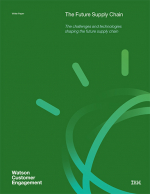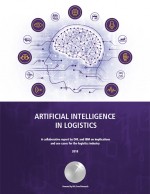The New Software-Defined Supply Chain
IBM Institute for Business Value executive summary: Preparing for the disruptive transformation of Electronics design and manufacturing.
Adaptability is a hallmark of the Electronics industry, with its history of changes ranging from incremental to radical. Traditional manufacturing has shaped worldwide trade flows and built industry structures based on economies of scale, as well as supply chains that are both multi-tiered and global.
Over time, three major manufacturing and product design trends have emerged, shaped by the physical reality of the industrial supply chain: parts continue to become more standardized; assembly has continuously shifted toward modules from basic components; and complex mechanical controls continue to be replaced by simplified digital intelligence. More than a century later, these same rules still drive industry strategy, not just in Electronics but across a variety of manufacturing industries.
Now, the historical rules hardened by a century of experience are being overturned by three emerging technologies: 3D printing, intelligent robotics and open source electronics. Together, they are creating a manufacturing environment that can be defined and executed through managing software and data files – a transformation we describe as moving from a hardware-based supply chain to one that is “software-defined.”
To understand how the competitive landscape of the Electronics industry will change and how these technologies will impact real-world, financially driven enterprise investment decisions, we conducted the 2013 IBM Electronics Manufacturing Study. The study is comprised of two primary research components: a face-to-face survey of 55 executives in 10 countries and a quantitative model to measure the effects of ongoing industry changes.
These newer technologies can produce an average 23 percent unit cost benefit and reduce barriers to enter manufacturing by an astounding 90 percent. Yet half of our survey sample has no manufacturing strategy to manage the impact of digitization.
By changing requirements for scale, location and volume, the software-defined supply chain won’t just changes costs or manufacturing processes – it will effectively up-end the industry structure as we know it.
What’s Related




Favorites





